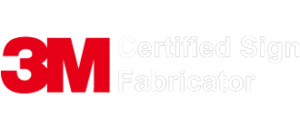
MUTCD – Federal Standards For Signs
The Manual on Uniform Traffic Control Devices for Street and Highways (MUTCD) sets a national standard for the size, placement, and design of traffic control devices. The goal of the MUTCD is to reduce the number of accidents, alleviate congestion, and improve traffic flow throughout the U.S.
While every state has adopted the MUTCD, some have gone a step further and developed an additional set of rules. However, they ultimately must conform to the original standards set forth by the Federal MUTCD.
Continue reading to learn the rules for federal standard highway signs and their meanings or jump straight to the section you’re interested in:
- Road sign design
- Road sign placement
- Road sign letter height
- Sign guidelines by category
Road Sign Design
While the actual design, lettering height, and placement vary due to the type of sign, there are general overarching guidelines that each one should follow. The message variability should control the overall dimensions of sign plates—ideally in multiples of 150mm or six inches.
In some instances, the usage of smaller than “nominal” sizes are permissible for the four types of road signs. For example, if a sign is mounted over a roadway lane, it may have to be limited in width due to the width of the road, or height due to vertical clearance limitation.
Conversely, a larger than “nominal” sign might be required in situations where greater legibility, emphasis, or visibility are needed. In cases where there is a need to deviate from the “standard” size, it’s permissible to use an increased or decreased edge spacing, interline, and letter height. However, the final design should be as near to the standards as possible.
Road Sign Placement
The exact placement of the various road signs is also laid out by the MUTCD. For example, advance warning signs require a formulaic calculation before installation. It’s called the Perception-Response Time (PRT) and takes into consideration the time needed for detection, recognition, decision, and the driver’s reaction.
Sometimes standard signs will require another sign to warn them of the upcoming sign. A STOP or YIELD sign is to be installed on the near side of the intersection on the right-hand side of the approach to which it applies. However, if sign visibility is restricted, a “Stop Ahead” sign is required in advance of the STOP or Yield sign.
Road Sign Letter Height
The standards for lettering height are based upon an accepted rule of thumb for the legibility of signs in any category other than Interstate. The formula is 22mm (1 inch) of letter height for every 12m (40 feet) of desired legibility.
Conventional roads on major routes or rural districts require the principal legend on guide signs to be at least 150mm (6 inches) in height. Alternatively, on urban streets and low-volume roads with speeds of up to 25 mph, the principal legend should be 100mm (4 inches in height).
What Are The Federal Standards For Road & Highway Sign Categories?
The MUTCD also sets forth the standards for various sign categories, such as regulatory, school, and emergency management, to name just a few. While there are a few exceptions, here are the general guidelines for the various categories of signs.
Regulatory
Regulatory signs are most often rectangular, with the longer dimension being vertical. They are to keep road users informed about select regulations and traffic laws, along with indicating the applicability of the legal requirements. They should be installed at or very near where the regulations apply.
Warning
The placement of warning signs requires a calculation of the amount of time it takes for the driver to see, understand, and react. This formula is consists of:
- Perception (seeing the sign)
- Identification (understanding the sign)
- Emotion (decision making)
- Volition (execution of driving decision)
These four elements combined are called the PIEV time and can vary from one or two seconds up to six seconds for warning signs requiring high user judgment.
Guide
The term guide signs refer to a subset of highway sign classifications that serve one or more purposes:
- Providing directions to destinations, highway or street routes, and at interchanges or intersections
- Giving advance notice of the approach of an interchange or intersection
- Indicating distances to destinations
- Offering other valuable information to the road user
The suggested placement varies depending on the type of road. However, the overarching idea is to make sure that it is located in an area that commands a road user’s attention, especially when the sign requires them to perform an action or make a decision.
School
School signs are essential as they help ensure reasonably safe and effective traffic control and pedestrian safety. These signs must be uniform, as any deviation could cause confusion on the part of pedestrians and road users.
In many cases, engineering studies are often required to determine the best placement of these signs. This is based in part due to the unique layouts of the streets coupled with traffic flows.
Emergency Management
Emergency management signs are designed to control and guide highway traffic during emergencies. They should not permanently displace any of the standard signs that are normally applicable. The burden of advance planning for transportation operations’ emergencies is the local and state authorities’ responsibility.
Civil Defense
Civil defense signs are part of the highway signs subcategory and have the same sizing, placement, and lettering requirements. Over the past 50 years, the focus of civil defense signs has shifted primarily from military attacks and war to natural disasters and emergencies. Hurricane shelters, welfare, and medical centers make up the bulk of civil defense signs today.
Learn More About Road Signs & Traffic Safety
If you would like to learn more about our MUTCD compliant traffic safety equipment and signs, reach out to us today or start browsing our traffic control products.






